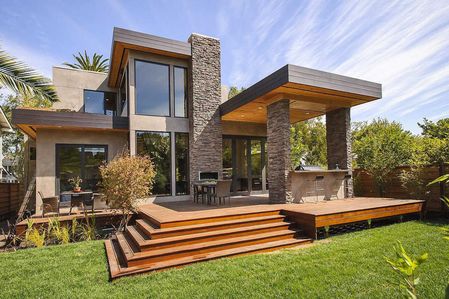Greenwashing is a trend across all industries known to man. This is partly due to the fact that while more and more people start caring about the environment and holds the concept of “green” in higher regards compared to a decade ago, the knowledge of what consists a “green building” does not follow.

This results in homebuyers being tricked by greenwashing, that is merely a marketer’s jargon to generate more money instead of an act of actually caring about the environment. So how can you actually discern if your prospective home is environmentally friendly or not?
Certification
Certification is the quickest way to find out whether a house is actually environmentally friendly and energy efficient as opposed to merely a product of greenwashing marketing or not. And thankfully, so far, certification is rarely falsified.
Therefore the first thing you can do when you want to buy an environmentally friendly house is to find out if the house has any certifications.
There are a number of different certifications for different reasons/cause. Some of the most well-known certifications would be LEED (Leadership in Energy and Environmental Design), BREEAM, SCS Certified (Scientific Certification System), National Green Building Standard, et cetera.
Make sure that the certifications of your prospective properties are aligned with what you think matters the most to you.
Check the home features
Home features are also one of the easiest ways to find out whether a house is truly green. There are important home features that are designed to minimise the usage of energy, in this case, electricity, through features that use alternative, renewable energy sources.
Sellers would feature energy facilities, for example, if a house has solar panels. The home design is largely what’s responsible for it to be environmentally friendly.
The entirety of the design, for example, how the house can passively allow air to circulate well, how the house can receive and take advantage of sun light and the sun warmth to the best of its ability, etc., are all factors that saves the consumption of energy.
The wording “passive” here roughly means without the use of electricity. Minimising the usage of energy is a big part of what being “green” is all about. The less usage of electricity-generated energy, using electronic devices, the better. Home features play an important part in this.
Does the house has a “passive” design?
A passive house is a j house that adheres to the Passive design principle. A “passive house” is an excellent standard when it comes to a house being energy efficient.
If you’re especially looking for a “passive house”, you’re also likely not going to be subject to the whole greenwashing ‘scam’ because it emphasised on the design of the house and energy efficient appliances are far from what a passive house is all about.
A passive house term also goes by the name “Solar house” or “solar passive house”. It’s arguably the best design principle when it comes to being “green” because of the energy efficiency it managed.
A passive solar house allows natural energy to help generate the house’s temperature to a comfortable level. The building takes advantage of the sun energy to the best potential a building can achieve.
It takes advantage of the sun warmth during the winter months. Passive houses are be able to protect its dwellers from the harsh sun during the summer months as well.